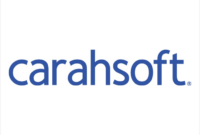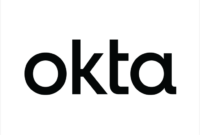Speakers
4 speakers
Date & Time
On Demand
Webinar
As many agencies move their applications closer to citizens, identity will play a more critical role in improving customer experience.
At the same time, agencies must figure out a way to have a secure but seamless experience for their citizen customers.
If the citizen experience is bulky or clunky, or includes security requirements seen as arduous, their ability to meet mission goals will be hampered.
Agencies need to figure out the best approach to striking this right balance.
Anna Santos de Dios, the deputy chief information officer for the office of the Air Force deputy chief of staff for manpower, personnel and services, said the service is bringing together its decades’ worth of experience and success with identity and access management with the newer trend around human-centered design.
“The folks that we serve are coming to us from sectors or maybe population segments that we haven’t served as well. In the past, I gave the example of Wounded Warrior caregivers, and others, as users of our childcare services on the various bases. Those parents may not have a government or employee identification that we use to validate access for most of our application users. So we need to find a way to get them in,” Santos de Dios said on the discussion Leaders in Cyber: Identity and Access Management. “We’re also working together with the US Postal Service to provide a point of entry for folks to go if they need to validate identity in person, much as you might do if you are getting a passport, you can go to the Post Office and have your identity verified in person there.”
Santos de Dios said by applying the concepts of human-centered design, the Air Force can ensure it’s addressing all facets of their customers’ needs. This idea becomes more important as they continue to modernize applications and services.
“As we look to modernize, one of the themes is a seamless experience across all platforms. In the past, we’ve been tied to our desktops, but so many of the younger users, and even our long-time users, are looking to more of that mobile experience. So as we’re extending our services and our applications into that mobile space, we want to make sure that we build that in from the ground up so that our modernized systems provide that capability as seamless and baked in, and it’s not something that we’re bolting on later, which turns out to be clunky and incompatible,” she said. “We are at a point of inflection, a real moment of opportunity, to do it with each system that we either bring on board or modernize. I’m really excited about that team and that opportunity.”
Making it easier on the front end
Like the Air Force, the Labor Department faces a diverse customer base, including the government offices that provide unemployment insurance across all the states and territories, and given the challenges over the past few years also sees a moment of unpresented opportunity.
“We want to enable states and provide states within the system with stronger capabilities, including modern infrastructure and tooling, like cloud technology, which allows states to more easily sense and respond to the varying needs of their constituents or the program requirements. Customer experience plays a really key role in this, obviously, because it’s one of the ways in which individuals interact with the system,” said Larry Bafundo, the deputy policy director for the Office of Unemployment Insurance Modernization at the Department of Labor. “We believe that if you can make things easier for people on the front end, you can also reduce complexity that drives, delays and causes potential errors that contribute to the program’s timeliness and program integrity aspects. We’re trying to show how better customer experiences on those lines can have a multi-sided value proposition and support the program in a number of ways not just access.”
Bafundo said Labor’s focus is on giving states five key characteristics to strive for with their unemployment insurance modernization efforts as well as standards to build against.
“We are trying to orient states and our efforts around for what makes a good effective customer experience from a payment portal standpoint. One is that those portals should be digital, most of the UI system does provide digital access to filing a claim for unemployment. But in some cases, states still do not provide that capability. And that’s, that’s a gap we want to help close. It should also provide pathways to identity proofing as part of that experience. And also include both multiple pathways to doing so both remotely digitally and in person through our partnerships with the US Postal Service,” he said. “It should provide multilingual support so content should be available for a number of different individuals with different backgrounds and languages. In addition to communicating those, some of the some very complex legal terms and straightforward, plain language. They should also be secure and including things like multi-factor authentication. The fifth one is that they should be mobile responsive or design mobile first, which is a little bit of what Anna was describing.”
Feedback loops drive capabilities
Labor has spent a lot of time working with states to improve how their claims portals can become more mobile responsive without a lot of redesign or a major technological overhaul. Bafundo said through this effort citizens have seen better services in the reduction in the amount of time it takes to file claims.
“I think the challenge in government is ensuring the customer is part of the process from the beginning can be difficult to do in the context of making sure that human centered design is applied throughout the lifecycle of a service. It’s not just something that should happen at the beginning. It should be happening throughout,” he said. “Those feedback loops need to exist in a capacity that allows them to sense and respond, where changes or new requirements are needed. For the service to be able to deliver on that rapidly, part of that is bringing all different pieces together deliver to deliver effective customer experiences. That includes not just being aware of where common points of friction are in the customer journey, but having modern tooling and practices like automated testing and deployment, quality, infrastructure, etc, as well as effective engineering capabilities to be able to deliver on those enhancements at the speed of need.”
Sean Frazier, the federal chief security officer at Okta, said because a modern identity management system is a critical capability in customer experience, agencies must ensure the security is built in, transparent and not burdensome to the user.
“You have to make sure that you you’re aligning yourself to what users are expecting. You have to be able to engage across all the spectrums of experiences,” Frazier said. “You got to make sure that you’ve got the spectrum of experiences that you can provide, and identity is the linchpin of this. You’re really not delivering anything until somebody requests access to something and that’s your identity platform.”
Friction should be on the attackers
The concept is to ensure users can make two clicks in about 10 seconds to get to the service they need. And that means, Frazier said, the identity service can’t require the citizen to jump through a lot of hoops.
This doesn’t mean trading security for ease of user, however. Frazier said the two are intertwined.
“It should not be friction for users. It should be friction for attackers. If you’re going to be building a system, you need to build a system where you’re thinking about security in the sense that I’m expecting to be attacked, I’m expecting bad guys to try to come in and do credential breaches and try to steal things. So I need to be anticipatory. I need to be figuring that that’s going to happen and stop that from happening. But if a user comes in, and a user is requesting access to something and the user looks good based upon behaviors and device trust and all the different things that I can mix in from a technology perspective, then I’m going to let that user sail through,” he said. “I think one of the most exciting things for me as we partner with folks like Air Force on modernization around identity is I look at the recruits with no Common Access Card and getting access to services and giving them good experiences. Then moving them into to warfighter mode, where they have CACs. I hear from a lot of people’s like they want to go back to the experiences they had before. They don’t want Common Access Card experience. They want the seamless experience.”
Learning objectives:
- The intersection of digital modernization and CX
- Balancing cybersecurity with CX
- The shift to the cloud vs. on-premises
Complimentary Registration
Please register using the form on this page or call (202) 895-5023.
Speakers

Larry Bafundo
Deputy Director, Technology, Office of Unemployment Insurance Modernization
Department of Labor

Anna Santos de Dios
Deputy Chief Information Officer, Manpower, Personnel and Services
Air Force

Sean Frazier
Federal Chief Security Officer
Okta

Jason Miller
Executive Editor
Federal News Network
Please register using the form on this page.
Have questions or need help? Visit our Q&A page for answers to common questions or to reach a member of our team.


